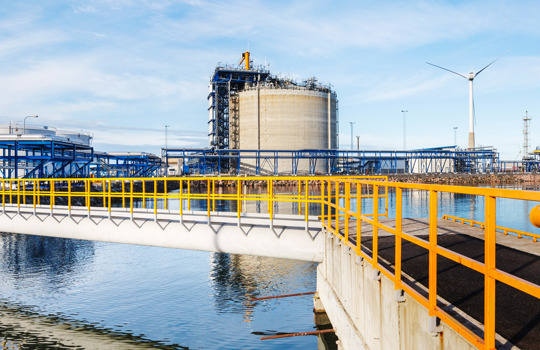Increasing biogas availability is one way to immediately reduce emissions
The incorporation of renewable biogas and other low or zero-emissions methane-based fuels is a crucial element in lowering carbon emissions. Gasum aims to bring 7 TWh of renewable gas to the market by the end of 2027. Biogas is an already available solution that can help reduce life-cycle greenhouse gas emissions by up to 90 percent compared to fossil fuel use.
Biogas production and use are a part of the circular economy. When waste is used as feedstock for biogas, it becomes a resource for a renewable fuel. By diverting organic waste away from landfills and capturing the biogas it generates, societies can significantly reduce greenhouse gas emissions.
Biogas also facilitates a circular economy by utilizing waste materials such as agricultural residues, food waste, and sewage sludge, further reducing our reliance on fossil fuels.
“Gasum offers a reliable, all-in-one solution for customers who are seeking to reduce their carbon emissions. Our commitment to sustainability means that customers can rely on us for a reliable and consistent supply of biogas. We provide a comprehensive solution that supports our customers’ emission reduction goals, ensuring a seamless transition to cleaner energy”, says Ari Suomilammi, Gasum’s Head of Production.
Biogas and synthetic methane play complimentary roles in emission reductions
In addition to biogas, other low or zero-emissions methane-based fuels are natural gas and synthetic methane. Synthetic methane, also known as e-fuel or e-methane, can play a crucial role in the production of energy in the future. Synthetic methane is produced by combining hydrogen with carbon dioxide, sourced from, for example, biogas production.
While biogas production in Finland amounts currently to 1 terawatt hour (TWh), the production potential of synthetic methane can quickly reach several TWh, depending on renewable electricity generation. The use of wind power for hydrogen production expands production possibilities further and it helps to reduce greenhouse gas emissions in the Nordics when used instead of fossil fuels.
“At times when electricity prices fluctuate, even reaching negative values, e-methane offers the opportunity to store excess electricity in the form of methane within the existing gas network and storage system. This provides additional flexibility in balancing electricity consumption and production. Synthetic methane can also be used as a transportation fuel, and it opens new possibilities in various additional sectors”, Ari Suomilammi says.
Gasum’s goal is to bring 7 TWh of renewable gas to market annually by the end of 2027
Gasum’s goal is to bring 7 TWh of renewable gas to the market annually by the end of 2027. Using 7 TWh of renewable gas instead of fossil fuels would mean a cumulative annual reduction of 1.8 million tons of carbon dioxide. Gasum also purchases biogas from trusted partners, which ensures a consistent and secure supply of low-emission energy to Gasum’s customers.
The goal set by the European Union is to increase biogas production elevenfold by 2030, reaching an impressive 350 TWh per year.
“In terms of ramping up biogas production, the availability of raw materials remains a limiting factor. Bio-waste, animal manure, and cultivated biomass represent significant potential. In the future, algae could become a cultivated biomass with significant potential, for example. Gasum is currently exploring the possibilities of synthetic methane production and utilizing the carbon dioxide from biogas production,” Ari Suomilammi says.

How is biogas produced?
Biogas is produced through the processing of various types of organic waste. It is a renewable and environmentally friendly fuel made from 100% local feedstocks that is suitable for a diversity of uses including transport fuel and industrial uses.



